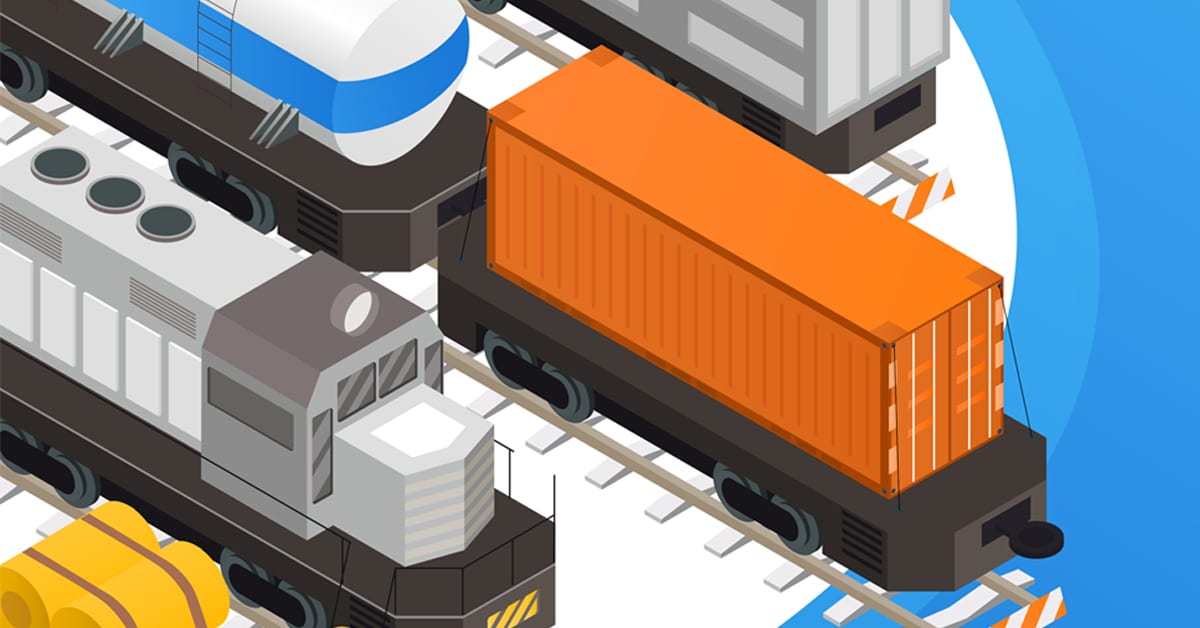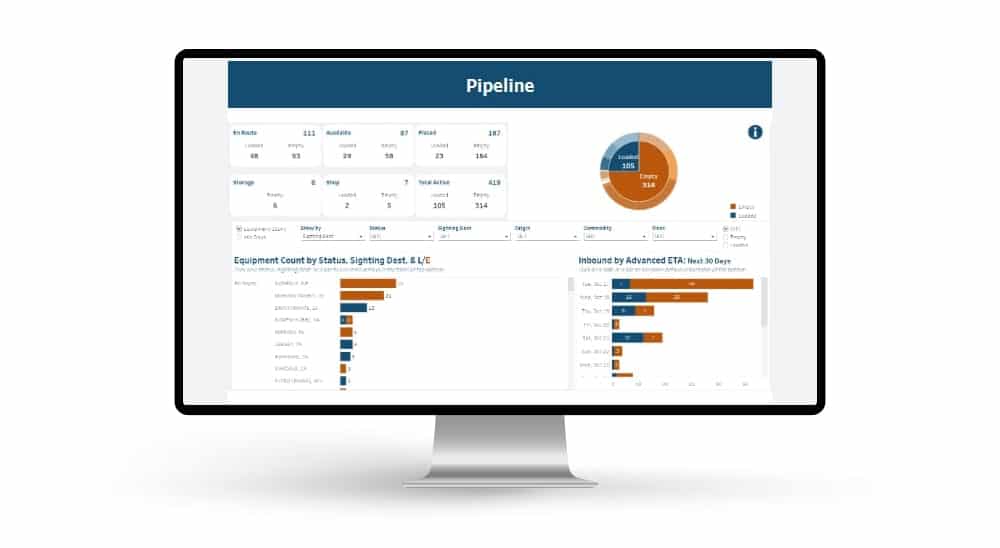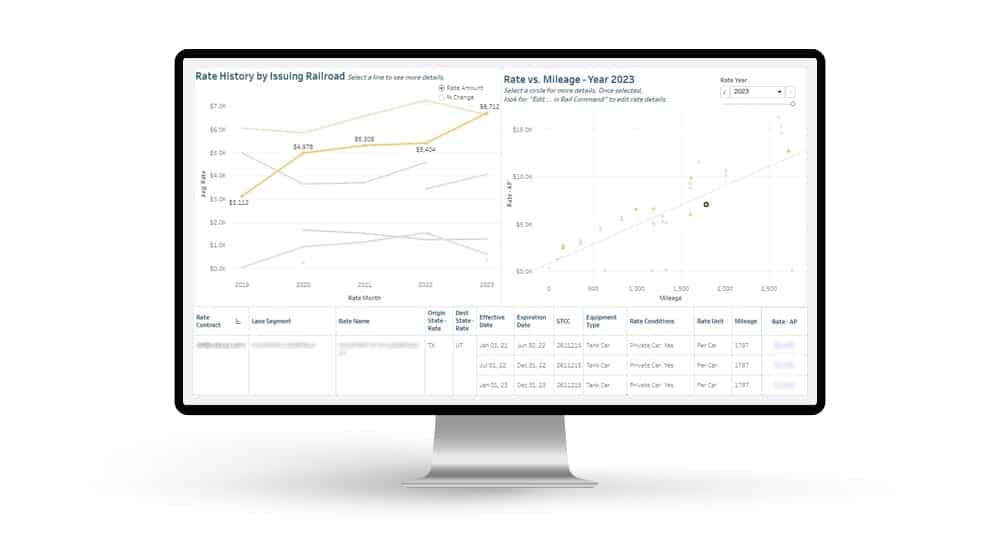In today’s fast-paced and highly competitive business landscape, information is a valuable asset. The ability to access, analyze, and utilize data effectively can make a significant difference in the success and growth of companies across various industries.
One industry where data can make a huge difference is rail shipping. Rail transportation plays a crucial role in the global economy, serving as a vital link in supply chains and facilitating the movement of a variety of freight. However, many companies fail to recognize the wealth of information that is readily available within the rail industry and the potential benefits that can be gained from using it.
Whether it is optimizing freight shipping strategies, improving supply chain efficiency, enhancing safety measures, or leveraging advanced analytics, the insights that you can find from rail industry information can help your business grow, reduce costs, and improve your operations. In this blog we’ll help you find and recognize the wealth of information at your fingertips and how you can invest in the necessary resources and capabilities to unlock its full potential.
Gain Insight Into Market Data
If you’re a rail shipper, oftentimes you’ll have a limited view of the rest of the industry with no visibility beyond your own rail shipments. But that doesn’t have to be the case! Data does exist that can offer you visibility into the rail shipping market, data that can help you determine competitive positions and identify new growth opportunities. Much of this data comes from the Surface Transportation Board (STB), a United States government agency tasked with the economic regulation of freight rail. This organization collects data directly from the railroads and publishes it for access by anyone.
One of the STB reports, the Quarterly Commodity Statistics, provides both revenue and volume for each major railroad. This trend-based data gives a picture of the railroad’s market positions, which enables rail shippers to make comparisons to aid negotiation strategies. For example, if you’re working with a railroad that is falling behind its competitors, you may be able to approach them and gain better results on your shipping rates if they are eager to grow their business by undercutting their competitors and attracting your business. In addition, taking a look at how revenue-per-unit changes over time can be helpful when you negotiate for reduced rate increases on your business that is already shipping with the railroads.
Another STB report is the Public Use Waybill Sample, which obtains actual freight bill information (an invoice that details the various costs charged for moving your freight) and publishes it, although with some confidentiality protections. From this data, it’s possible to identify individual loads from other shippers. It’s also possible to use this data set to determine markets that are growing or in decline. This can help you better understand your position relative to your competitors and help you assess which new opportunities would be worth pursuing. This data can also provide information on specific competitors’ shipments and determine how often freight is shipped on contracts versus tariffs for a given commodity.
In addition, typical shipment patterns can be revealed, including equipment type, size, and lading weights. You might also want to determine how often Rule 11 rates are used since that rate structure can be advantageous in saving you money; if other shippers have used it for your route, you might be able to negotiate for that as well. For more information on the value of the Public Use Waybill Sample, check out our entire blog just about this database – Use the Waybill Sample Data to Grow Your Business.
Negotiate From an Informed Position
Historically, if you are a rail shipper, you have been mostly “in the dark” when it comes to rail rate information. Without insight into the railroads’ pricing structure or areas of leverage, many freight shippers have been unaware of whether the rates they pay are reasonable or not. Since rail pricing is unfortunately more complicated than just being based on distance, and can vary depending on the cargo, it is difficult to estimate what a rate should be for your shipment. However, if you can understand how the railroads price, you can hold some of the power when negotiating.
When negotiating, it is useful to develop a strategy that uses the information you have available to make sure you receive advantages. For instance, based on the data, you may determine it would be best to focus on decreasing costs on one specific route, rather than pushing for rate discounts on all your rates. Sometimes the data shows that controlling costs for your most expensive route is more important than smaller savings across the board. Starting the negotiation by telling the railroad the rate you need based on your previous analysis often leads to a lower final rate than if the railroad develops the number first.
If you are looking for other ways to control your rail shipping rates, check out 5 Tips for Effectively Negotiating Rail Freight Rates.
Save Time Locating and Accessing Information
While all companies want to save money, saving time can also contribute to your bottom line and improve your profitability. When tasks become more efficient and necessary information is obtained more quickly, you can focus on other activities that contribute to long-term success.
Those involved with setting up and executing rail shipments often need to determine rail station names, serving carriers, routes, and miles. Confirmation of STCC (Standard Transportation Commodity Codes) and equipment issues may be needed, as well as monthly fuel surcharges, railroad financials, storage and bulk transload locations, and Short Line information. Streamlining access to this valuable information can ensure that time is well spent, enabling your employees to be more productive.
This information can be often found in a variety of locations. The slowest method is to go to each individual railroad’s website and find the data there. However, there are many other sources of valuable rail information. Our Rail Impact® software provides access to the STB data, insight into rail pricing, and an extensive reference section where you can obtain rail information. In addition, there are other rail agencies that publish information regularly on their websites.




 Automated exception reporting of the railcar tracking data makes it easy to identify and troubleshoot jeopardized shipments, thereby enabling you to provide better service to your stakeholders.
Automated exception reporting of the railcar tracking data makes it easy to identify and troubleshoot jeopardized shipments, thereby enabling you to provide better service to your stakeholders. Receive notification of pending rate expirations. Tariff changes and fuel surcharges can be automatically updated.
Receive notification of pending rate expirations. Tariff changes and fuel surcharges can be automatically updated.